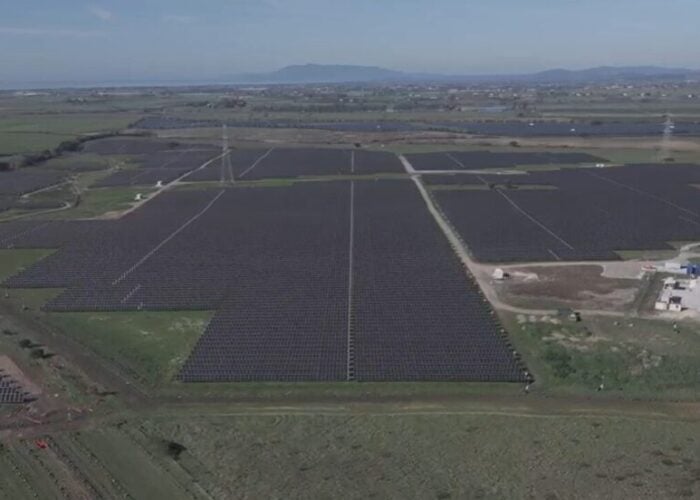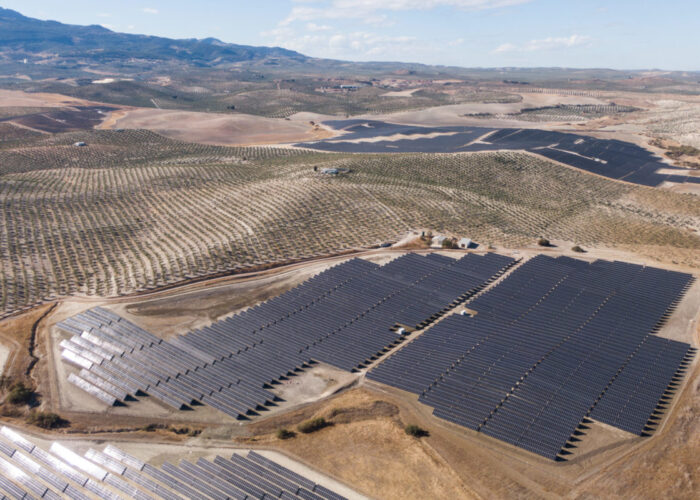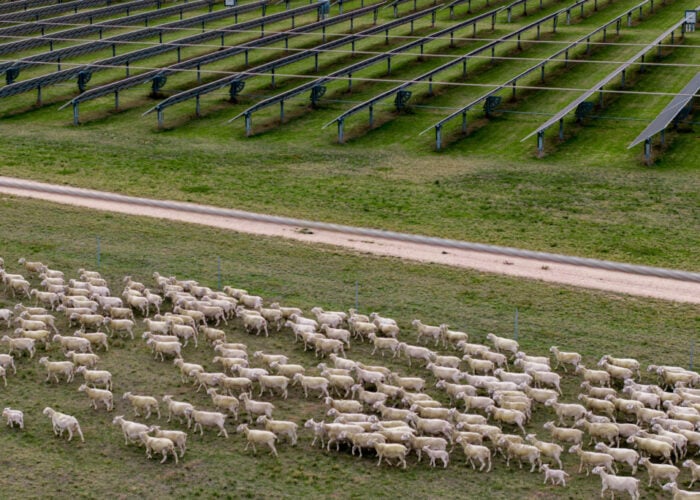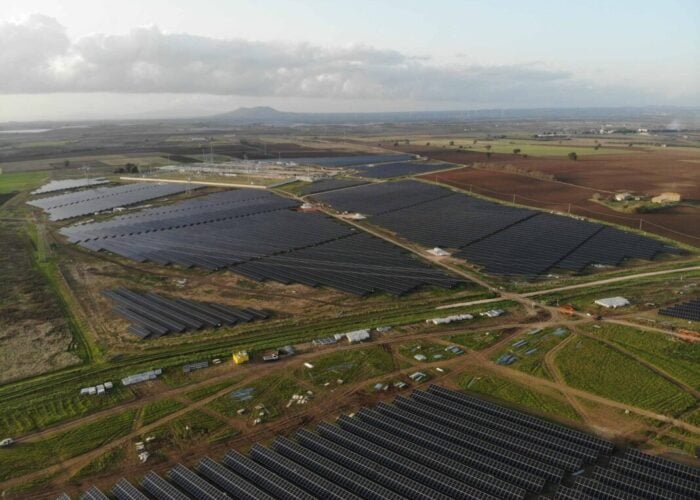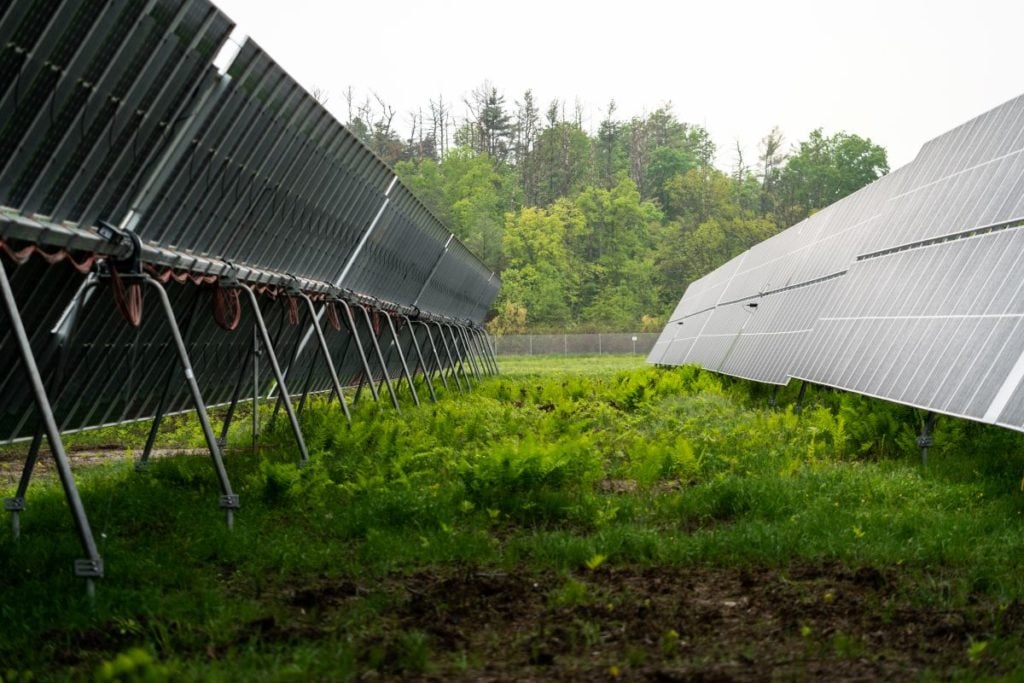
Interest in agrivoltaics has been on the rise in the past year, with several utility-scale projects brought to commercial operation across Europe, with Italy as one of the leading countries.
In Europe alone, agriPV has the potential to deploy 51TW of solar PV, according to research published in the Progress in Photovoltaics journal earlier this year.
Unlock unlimited access for 12 whole months of distinctive global analysis
Photovoltaics International is now included.
- Regular insight and analysis of the industry’s biggest developments
- In-depth interviews with the industry’s leading figures
- Unlimited digital access to the PV Tech Power journal catalogue
- Unlimited digital access to the Photovoltaics International journal catalogue
- Access to more than 1,000 technical papers
- Discounts on Solar Media’s portfolio of events, in-person and virtual
With land scarcity an issue that will likely increase in the coming years, giving a dual-use to agricultural land will likely have more projects being built on these lands.
Several developers PV Tech spoke to during RE+ 2023 in Las Vegas in September have been looking into either developing projects or the technology needed to do agriPV projects in the US. This could in itself help secure permits at a local level and with the social license.
One of these companies is community solar developer Lightstar Renewables, who earlier this year said it was “very active” in agriPV, combining it with community solar and has since then started work on two such projects, including one in New York, unveiled on 26 September.
In order to better implement the dual-use of agriculture and solar PV, the developer has partnered with America’s Farmers Trust and consulting company Solar Agriculture Services (SolAg), both of which are involved in Lightstar’s 2MW community solar farm plant and New York’s first agriPV project that was announced yesterday.
For the Old Myers community solar project, the farmer will be harvesting strawberries, tomatoes, peppers and lavender. Knowing what type of crop a farmer is going to farm is important as it will affect the design phase of the project and how much space the solar panels need to leave for the farmer to properly do its work.
“We have them look at the land and get what’s typically developed on that land, and work with the farmers to come up with a farm plan that actually works for them and for solar,” says Allison DeNunzio, director of engineering at Lightstar Renewables, adding that one of the biggest challenges to convince farmers for the dual-use of their land is the lack of operational projects to use as reference points.
As more are being built across the US, and not just at utility-scale but also for community solar, it would make it easier for developers to give working examples of how a solar PV plant was built depending on the crop or graze of a specific farm.
From community to utility-scale
One of the advantages for community solar to implement agriPV is that these projects require less land than utility-scale, says DeNunzio as instead of requiring 2,000 acres of land, it would only be around 40 to 50 acres and give a better example of the co-existence of agricultural land with solar PV.
Community solar could help get a better understanding of how to improve the dual-use of agricultural land with solar PV that could then be transported to bigger projects for utility-scale which require bigger land use.
DeNunzio says that when looking at an agriPV project, more space has to be integrated between the panels, thus requiring more land for the same amount of panels. “The biggest thing is making sure there is enough room between panels to have crops. But also having the farmer understand that, instead of maybe 40 acres, we need 60. But you’re going to be able to farm the whole thing without changing anything.”
This would also be beneficial in order to convince people who are still reluctant to see solar PV near their homes, or be deployed in land that used to produce farmland. “A way to mitigate that is to get agriPV across the line. Which is integrating solar farms on farmland, but making the two coexist equally,” says DeNunzio adding that in itself brings design challenges that need to be solved.
“Tractors and solar panels don’t always play nice to one another. We need to make sure that on the front end, we’re looking at spacing concerns that the farmers may have for their equipment, as well as capital expenditure that goes into constructing these projects. There is a middle ground that needs to be met there for them both to be equal in the design phase.”
Furthermore, not every crop is the same and requires different implementations. For instance, if a farmer is growing corn or crops that go really high, the developer will have to come up with a friendlier solution for the solar panels and that also allows for the farmer to farm its land.
“Very different things are needed when you’re going through commodity crops, which are like soybeans, where you have huge combines, versus a market crop like pumpkins. It is very site specific, what is typically grown there, and then what the farmer is willing maybe to transition to on their land, or whether they want to keep it the same and continue their commodity cropping.”
Even though each crop might require a different implementation, some of them do have similarities and can overlap in terms of designing for each situation. And if we add to the whole conversation the possibility to do grazing from sheep to cattle, there can be a lot of overlap says DeNunzio. “They’re like Venn diagrams, where they kind of overlap with each other, but not all of them have the same thing as another one. There’s some overlap. But typically, we’d like to know upfront what the farmer is expecting, so we can design to that.”
Moreover, the project will have several benefits for the community living near the agriPV plants, as it will not just allow customers to get access to renewable energy but also the farmer to continue farming the land while getting an added income from the lease of the land to a solar plant. “There are definitely benefits to one leasing the land, continuing to farm the land, and then also getting power from the actual project.”
Even though agriPV might not be the main focus of developing projects for the community solar developer at this point, Lightstar is actively looking into improving the design phase of a project to better suit the crop(s) it will co-exist with for 25+ years. “The goal is to continue to integrate agriPV into our normal operating procedures,” adds DeNunzio.


